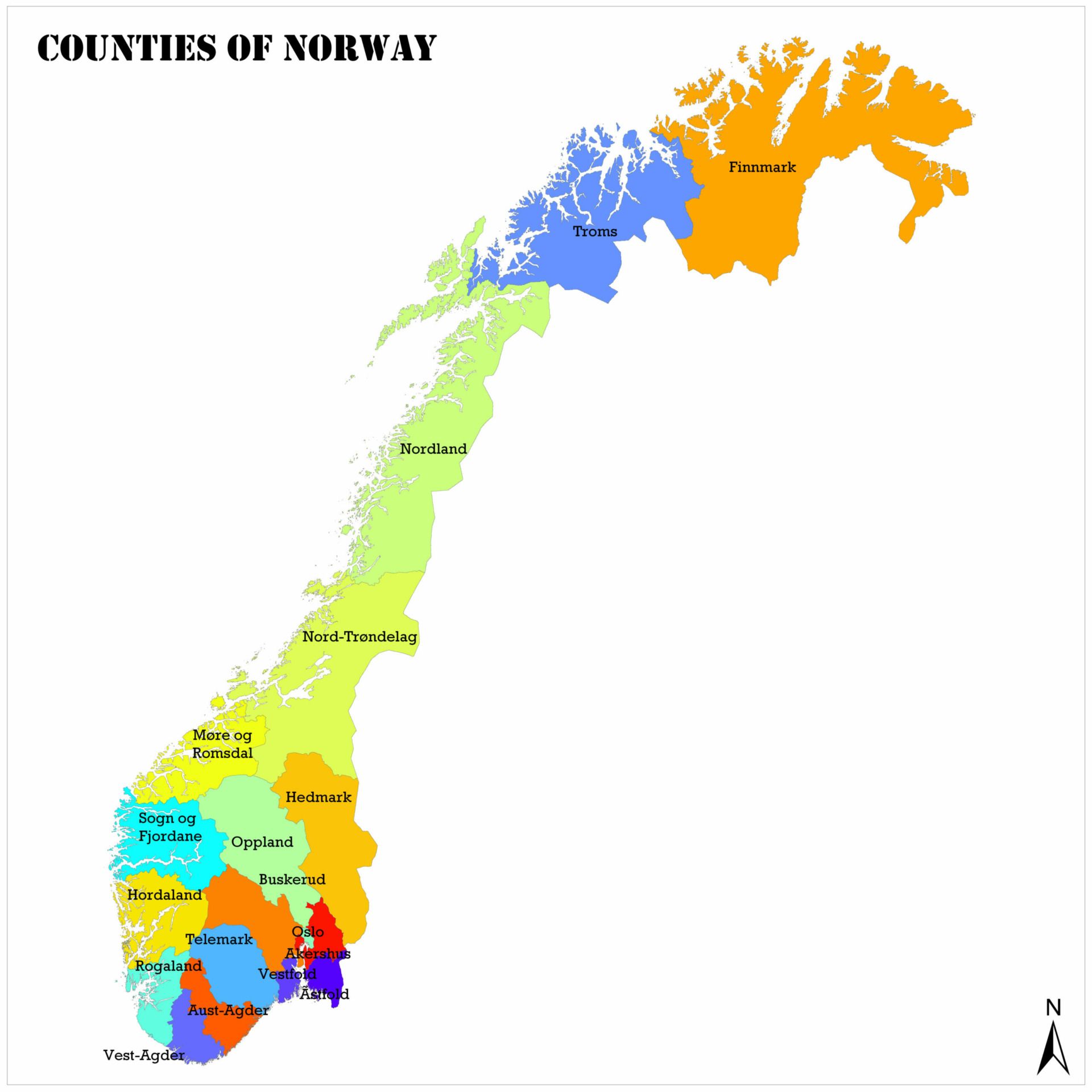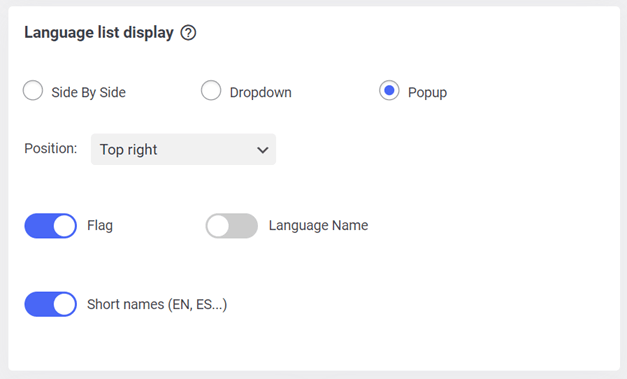Having a multilingual website provides not only the top languages in the world, but other languages that may have less number of speakers. Norwegian is one of the languages that you can enter in the language switcher options on the website.
Translating a website into Norwegian can be a highly beneficial endeavor for various reasons. Norway, with its high standard of living, strong economy, and advanced digital infrastructure, presents a significant opportunity for businesses and organizations to expand their reach and tap into a new market. Here are several key factors that contribute to the interest in translating a website into Norwegian.
First and foremost, the Norwegian market is substantial. With a population of over 5 million people, Norwegians have significant purchasing power and a strong affinity for online shopping. By offering a website in Norwegian, businesses can provide a localized experience, gaining trust and making it easier for Norwegian consumers to engage with their products or services.
What is the Norwegian language?

Norwegian belongs to the East Scandinavian group of the Germanic branch of the Indo-European language family. This language is one of the official languages in Norway and is also recognized as a minority language in several neighboring countries, such as Sweden and Finland. Norwegian is closely related to other Scandinavian languages, including Danish and Swedish, and shares similarities in vocabulary, grammar, and pronunciation.
There are two official forms of writing in Norwegian: Bokmål and Nynorsk. Bokmål, meaning “book language,” is the most widely used form of writing and is based on the Norwegian influenced by the Danish spoken in urban areas. Nynorsk, which means “New Norwegian,” is based on rural dialects in Norway and aims to preserve the more traditional Norwegian language. Both forms of writing are used in government, media, and education, although Bokmål is more commonly used.
The vocabulary of Norwegian is similar to that of other Germanic languages, such as English and German, by having the same linguistic roots. However, the Norwegian language has its own distinctive words, expressions and expressions.
Norwegian pronunciation can vary depending on the dialect and region. Spoken language can be very different from its written form, with various regional accents and dialect variations.
Learning Norwegian can give you access to the literature, culture and communication opportunities in Norway. It can also facilitate interaction with speakers of other Scandinavian languages and enhance understanding of the wider Germanic language family.
Dialects / varieties Norwegian language
Norwegian has several dialects or variations, reflecting the country’s regional and historical diversity. The main dialect groups are:
- Eastern Norwegian (Østnorsk): This is the most widely spoken dialect group and includes those spoken around Oslo, the capital. Standard Norwegian (Bokmål) is based on East Norwegian dialects.
- West Norwegian (Vestnorsk): This dialect group includes those spoken along the west coast of Norway, including Bergen and Stavanger. This dialect is known for its distinctive pronunciation and intonation patterns.
- Trøndersk: This group of dialects is spoken in the Trøndelag region in central Norway. This dialect has its own unique features in terms of pronunciation and vocabulary.
- Northern Norwegian (Nordnorsk): This dialect group includes the dialects spoken in the northern part of Norway, including Tromsø and Bodø. This dialect has some similarities to Swedish and Finnish due to the influence of the Sami language in the region.
- Southern Norwegian (Sørlandsk): This dialect group includes those spoken in the southern part of Norway, such as Kristiansand. This dialect has special features in pronunciation and vocabulary.
- Inland Norwegian (Innlandsk): This dialect group includes those spoken in inland areas of Norway, far from the coastal areas. This includes dialects spoken in areas such as Gudbrandsdalen and Valdres.
Each dialect group has its own special features in terms of pronunciation, vocabulary and grammar. There are even significant differences in pronunciation and vocabulary between neighboring areas.

Total speakers of Norwegian in the world
The total number of Norwegian speakers in the world is estimated at around 5.19 million people. However, it is important to note that Norwegian is primarily spoken in Norway, where it is the official language.
Norwegian is also spoken by communities of Norwegian and their descendants in other countries, most notably in the United States, Canada, Sweden and Denmark. In addition, there are Norwegian speaking communities in parts of the UK, Germany, Australia and other countries.
So that the total number of Norwegian speakers worldwide, according to the Ethnologue website, is estimated at 5.31 million.
Although Norwegian is not as popular as languages like English or Spanish globally, it plays an important role in the cultural and linguistic landscape of Norway, and has a strong presence in literature, media and education in Scandinavia.
Translation best practices a website to Norwegian language
Here are some best practices for translating a website into Norwegian:
- Use Native Norwegian Speakers: Ideally, translations are carried out by a professional translator who is a native Norwegian speaker. They have a better understanding of the nuances of language, cultural context, and idiomatic expressions.
- Maintain Consistency: Use consistent terminology, style, and tone throughout the website. This helps create a cohesive user experience and avoids confusion for readers.
- Consider Localization: Localization involves adapting content according to the local culture and preferences of the target audience. This includes using appropriate date formats, units of measurement, currency symbols, and adapting images or examples to suit the Norwegian context.
- Pay attention to SEO: If the website relies on search engine optimization (SEO), make sure the translated content uses relevant Norwegian keywords and follows SEO best practices for the Norwegian market.
- Double Check and Edit: After the initial translation, it is important to double-check and edit content to ensure accuracy, clarity and cohesion. Check for any errors or inconsistencies and make necessary adjustments.
- Test the Translated Website: Before launching the translated website, test it thoroughly to ensure that all translated elements display correctly, links work properly, and the overall user experience runs smoothly.

Several methods to translate a website to Norwegian language
There are two main methods of translation: human translation and machine translation.
Human translation involves using a professional translator or team of translators to translate text from one language to another. This method is often considered the most accurate and reliable method, especially for complex texts or texts that require a high level of cultural sensitivity. However, human translation requires a significant amount of time and money, and carries the risk of human error.
On the other hand, machine translation involves using software to automatically translate text from one language to another. This method does not require human intervention to perform the translation task. One popular example of machine translation is Google Translate.
Machine translation has the advantage of speed and greater cost-efficiency, but may lack the fine-grained understanding of human translators’ language and cultural context, resulting in a less accurate translation.
Each method has its advantages and disadvantages, and the choice between human and machine translation depends on factors such as the nature of the text, the level of accuracy required, available resources, and time constraints.
How to translate a website to Norwegian language
After knowing what methods can be used to translate websites into Norwegian, now we will try to use one of the translation services, namely Linguise.
Linguise is an effective and efficient website translation service solution. This service is compatible with various CMS and has easy configuration. With a choice of more than 80 languages, you can translate content into any language.
In this way you can reach a wide audience, not only from your own country. Use the intuitive dashboard interface to make translation settings even easier.
Monitor how many words have been translated, what content is most translated by visitors, and what language is most often used only from the Linguise dashboard.
Step1 : Registration Linguise account and add language
To obtain this API key, you must first register with Linguise. Don’t worry, you can try the free features for one month without having to enter any credit card information.
Afterwards, you will gain access to the Linguise dashboard. Select the Settings option, then scroll down to find the API Key section as shown below.

Then, in the column for Translation Languages, input “Norwegian” in the corresponding field, including the name of the language. Repeat this step for other languages as well.

Step 2: Install & configure the Linguise plugin
To integrate the API into your website, you will need to install the Linguise plugin beforehand. This plugin is compatible with various content management systems (CMS) such as WordPress, Joomla, and more.
Once the plugin is activated, navigate to the Main Settings section and proceed to paste the API key that you obtained earlier.

After copying the API, you can also configure the flag according to the desired language, in this case, Norwegian. Then, remember to click on the Save button to store and apply the changes.

Step 3: Edit translation with front-end live editor
Occasionally, some individuals may still lack confidence in the accuracy of machine translations, prompting them to manually improve the translated content.
Linguise offers a front-end live editor feature for users who prefer to translate directly on the website. By creating a translator account, selecting the desired language, and initiating live translations, users can modify the content in real-time. To access this feature, simply click on “Dashboard Linguise” and navigate to the “Live Editor” section.
Here, we provide examples of translations from English to Norwegian.

Now, translate a website to Norwegian language with Linguise!
Now you understand how to translate a website into Norwegian. Using an automated machine translation service allows you to reach a wider global market and enhance your business growth.
Neural translation technology ensures your translations are updated every 3 months, so you will never be disappointed. So what are you waiting for? Immediately register your account and join thousands of other users as a Linguise user!




